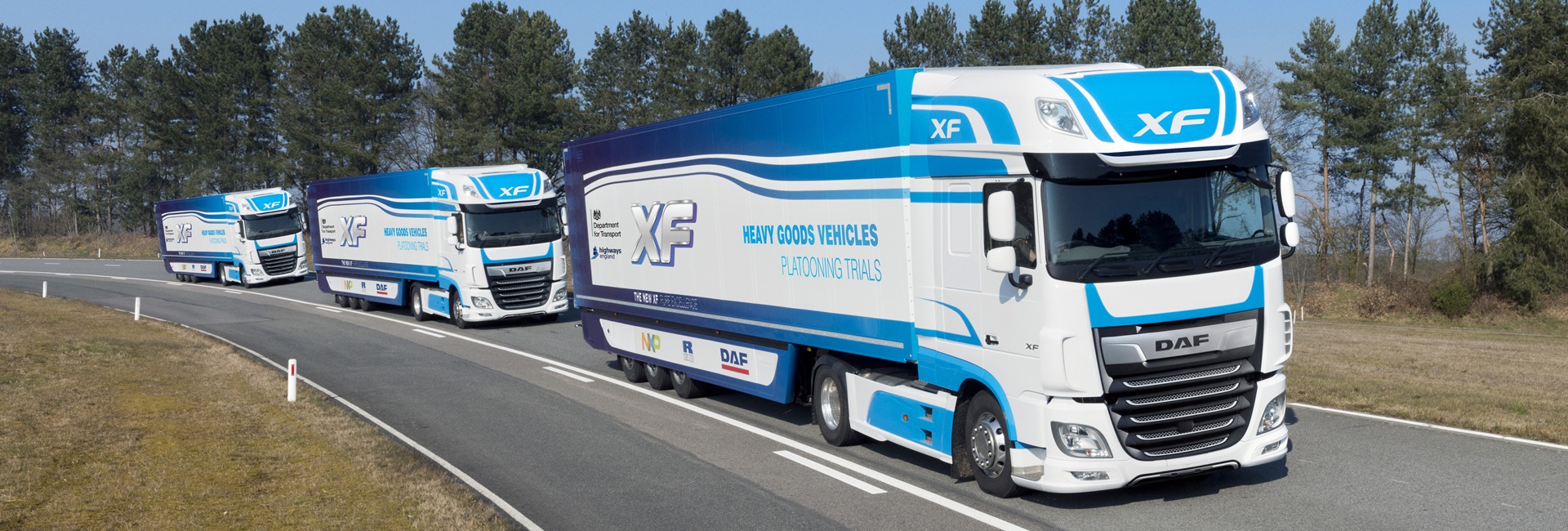
DAF Ecotwin/Ensemble
Truck platooning
EcoTwin/Ensemble
Truck platooning
With the EcoTwin project, DAF is demonstrating that it is possible to allow trucks equipped with wireless systems to drive in close formation thanks to highly advanced Wifi-P, radar and camera technologies. By using the information provided by the lead truck, the platooning trucks behind are able to accelerate, brake and even steer automatically.
CO2 reduction, increased safety and improved traffic flow are just some of the major benefits of truck platooning.
When the lead truck brakes, so too do the trucks behind, without any noticeable delay. In fact, unlike humans, these systems are constantly alert and are able to react 25 times faster than even the very best athletes. This contributes greatly to road safety.
Platooning trucks are able to drive in close proximity to each other because of intelligent technology, and in doing so they create a slipstream that can result in savings of up to 10% on fuel consumption, with the same effect mirrored in the drop in CO2 emissions. As a result of the ‘push’ effect of the following truck, the lead truck can also achieve savings of up to 5% on fuel and CO2.
Other Intelligent Logistics solutions

Urban distribution 2050
What might urban distribution look like in 2050? The distribution truck of the future is meant to kick-start a dialogue. How is urban distribution going to change and what role will trucks have to play?

DAF EcoCombi
They are already on the road in Scandinavia, the Netherlands, Belgium and certain regions in Germany: extra-long trucks, also known as EcoCombis.

